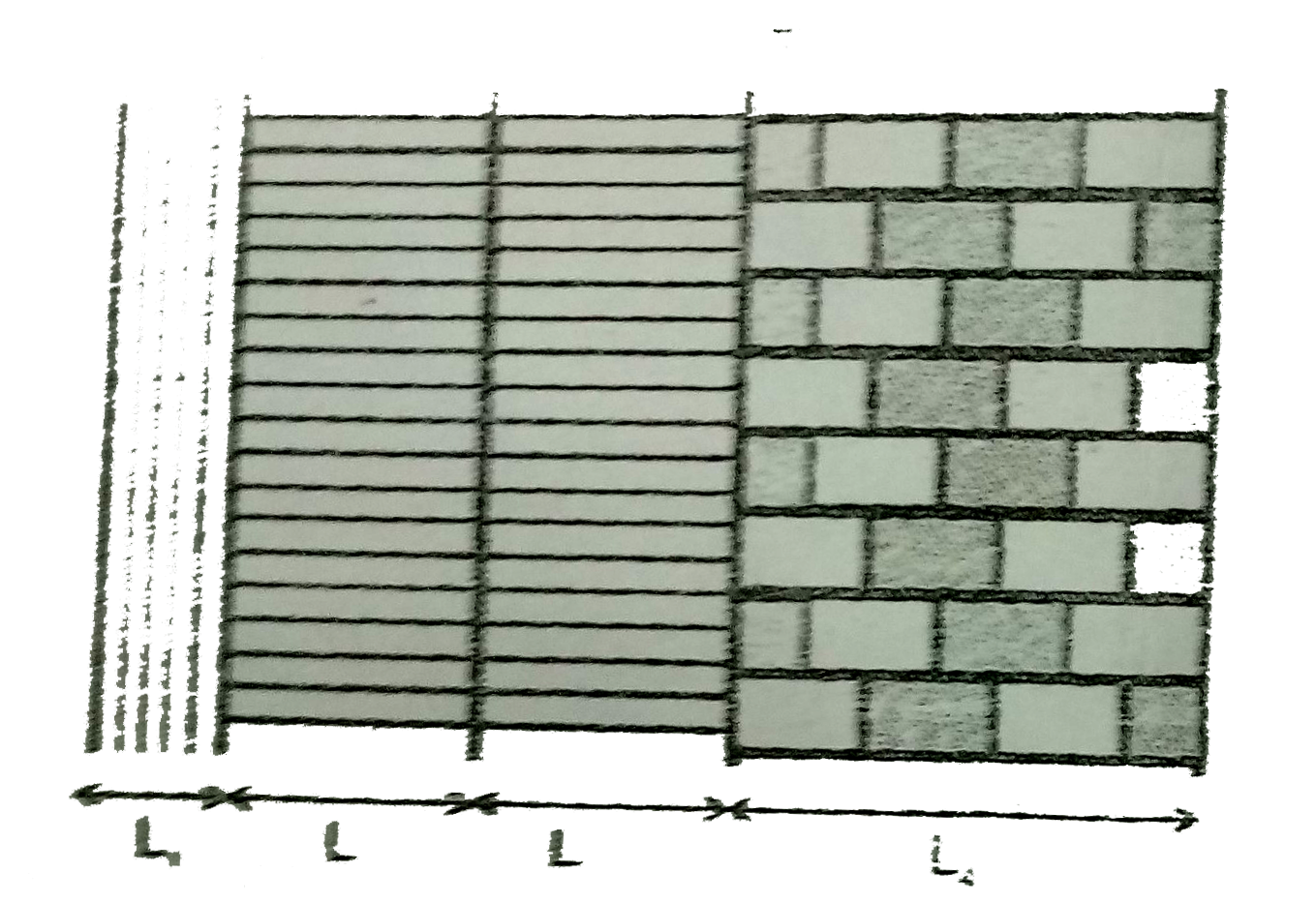The thermal conductivity of brick is 1.7Wm−1K−1, and that of cement is 2.9Wm−1K−1.What thickness of cement will have same insulation as the brick of thickness 20cm.
Since Q=KA(T1−T2)tL. For same insulation by the brick and cement Q,A(T1−T2) and t do not change.
Hence , KL remain constant . If K1 and K2 be the thermal conductivity of brick and cement respectively L1 and L2 be the required thickness then K1L1=K2L2 or 1.720=2.9L2 ∴ L2=2.91.7×20=34.12cm
Topper's Solved these Questions
- BOOK - ALLENCHAPTER - GEOMETRICAL OPTICSEXERCISE - SOME WORKED OUT EXAMPLES83videos
GEOMETRICAL OPTICS
- BOOK - ALLENCHAPTER - GEOMETRICAL OPTICSEXERCISE - EXERCISE -0165videos
GEOMETRICAL OPTICS
- BOOK - ALLENCHAPTER - CURRENT ELECTRICITYEXERCISE - EX.II66videos
CURRENT ELECTRICITY
- BOOK - ALLENCHAPTER - GRAVITATIONEXERCISE - EXERCISE 49videos
GRAVITATION
Similar Questions
The figure shows the cross-section of the outer wall of a house buit in a hill-resort to keep the house insulated from the freezing temperature of outside. The wall consists of teak wood of thickness L1 and brick of thickness (L2=5L1), sandwitching two layers of an unknown material with identical thermal conductivites and thickness. The thermal conductivity of teak wood is K1 and that of brick is (K2=5K1). Heat conducion through the wall has reached a steady state with the temperature of three surfaces being known. (T1=25∘C,T2=20∘C and T5=−20∘C). Find the interface temperature T4 and T3.
 View Solution
View SolutionShow that the SI units of thermal conductivity are W/m−K.
View Solution
Knowledge Check
- Question 1 - Select One
In question number 3, the thermal conductivity (in Wm−1K−1) if air is
A110B112C114D9130
The ratio of the thermal conductivities of two different materials is 1:2. The thermal resistance of the rods of these materials having the same thickness are equal. Find the ratio of the length of rods.
View SolutionAn electric heater is placed inside a room of total wall area 137m2 to maintain the temperature inside at 20∘C. The outside temperature is −10∘C. The walls are made of three composite materials. The inner most layer is made of wood of thickness 2.5 cm the middle layer is of cement of thickness 1 cm and the exterior layer is of brick of thickness 2.5 cm. Find the power of electric heater assuming that there is no heat losses through the floor and ceiling. The thermal conductivities of wood, cement and brick are 0.125W/m∘−C,1.5W/m∘−Cand1.0W/m∘−C respectively.
View SolutionA slab consists of two parallel layers of iron and brass 10 cm and 10.9 cm thick and of thermal conductivities 500Wm−1K−1and109Wm−1K−1 respectively. The area of opposite faces are 2m2 each and are at temperatures 373 K and 273 K. Find heat conducted per second across the slab and also the temperature of the interface.
View SolutionResistance of a conductivity cell filled with a solution of an electrolyte of concentration 0.1 M is 100Ω. The conductivity of this solution
is 1.29 Sm−1 . Resistance of the same cell when filled with 0.2 M of the same solution is 520Ω . The molar conductivity of 0.2 M solution of the electrolyte will be :View SolutionAn iron boiler is 1 cm thick and has a heating area 2.5m2. The two surface of the boiler are at 230∘C and 100∘C respectively. If the latent heat of the steam is 540kcalkg−1 and thermal conductivity of iron is 1.6×10−2Kcals−1m−1K−1, then how much water will be evaporated into steam per minute ?
View SolutionA liquid-nitrogen container is made of a 1−cm thick styrofoam sheet having thermal conductivity 0.025Js−1m−1C−1 . Liquid nitrogen at 80K is kept in it. A total area of 0.80m2 is in contact with the liquid nitrogen. The atmospheric temperature is 300K . Calculate the rate of heat flow from the atmosphere to the liquid nitrogen.
View SolutionAn electric heater is used in a room of total wall area 137m2 to maintain a temperature of 20∘C inside it, when the outside temperature is −10∘C .The walls have three different layers of materials. The innermost layer is of wood of thickness 2.5cm, the middle layer is of cement of thickness 1.0cm and the outermost layer is of brick of thickness 25.0cm. Find the power of the electric heater. Assume that there is no heat loss through the floor and the celling. The thermal conductivities of wood, cement and brick are 0.125Wm−1C−1 , 1.5Wm−1C−1 . and 1.0Wm−1C−1 respectively.
View Solution

